Patients who desire breast reduction are usually bothered by a sense of disproportion due to their large breast size and a host of symptoms such as back and neck pain, chest heaviness, shoulder pain or deep bra strap indentations. They may also experience difficulty exercising or being fitted for clothing or lingerie and may feel self-conscious due to their breast size. Breast reduction may alleviate all of these symptoms and lead to increased self-esteem and self-confidence in one’s appearance.
Since patients achieve both cosmetic and functional improvement through breast reduction, the procedure may be covered by insurance in many cases. Most insurance companies require that approximately three quarters of a pound of breast tissue be removed from each side during surgery in order to be considered functional rather than cosmetic in nature (in other words, more of a breast lift). If a patient requires less than the required amount to be removed, the procedure could be denied as cosmetic.
Dr. Samuels and her anesthesia providers do not participate with insurance carriers for coverage of any procedure. However, we are happy to discount surgical fees where possible since many breast reduction patients wish us to provide this service. As a result, Dr. Samuels is a preferred provider and performs many breast reduction cases a year, in which out-of-pocket fees to the patient may be only slightly higher than fees associated with in-network providers.
Living with disproportionately large breasts extends far beyond aesthetic concerns, creating a cascade of physical symptoms that can significantly impact quality of life. Back pain from large breasts represents one of the most common complaints among women seeking breast reduction surgery, often developing into chronic discomfort that affects daily activities, work performance, and sleep quality. The weight of oversized breast tissue places continuous strain on the spine, particularly the thoracic and cervical regions, leading to muscular imbalances and postural changes that compound the problem over time.
The biomechanical stress created by large breasts forces the body to compensate in ways that create additional problems throughout the musculoskeletal system. Women frequently report tension headaches, neck stiffness, and shoulder pain that radiates down the arms. Deep indentations from bra straps become permanent reminders of the constant pressure required to provide adequate support. At the same time, the weight distribution affects posture, causing many women to adopt a forward-leaning stance that further exacerbates spinal alignment issues.
Modern breast reduction surgery has evolved significantly, incorporating advanced techniques that prioritize both functional improvement and aesthetic results. As a female surgeon bringing innovative approaches to Southern Indiana and serving patients from as far as Lexington, Dr. Samuels understands the unique perspective women bring to this decision. The surgical technique involves precise removal of excess breast tissue, fat, and skin while reshaping the remaining tissue to create proportionate, lifted breasts that maintain natural contours.
The procedure addresses the root cause of symptoms by removing the source of excessive weight and redistributing breast tissue to promote better posture and reduce strain on supporting structures. Advanced surgical planning considers factors such as nipple placement, areola sizing, and the natural breast fold to ensure results that look proportionate and feel comfortable long-term.
While back pain from large breasts often motivates women to seek surgical consultation, breast reduction surgery addresses a comprehensive range of symptoms that many patients don’t initially connect to their breast size. Chronic fatigue often improves dramatically after surgery, as the body no longer expends excess energy maintaining balance and supporting additional weight. Sleep quality frequently improves when women can finally rest comfortably on their stomachs or sides without breast tissue causing discomfort or breathing difficulties.
Exercise limitations that have prevented many women from maintaining active lifestyles are typically eliminated after breast reduction surgery. The constant movement and impact associated with physical activity become manageable when breast tissue is proportionate to the body frame. This improvement in exercise tolerance often leads to better overall health outcomes, weight management, and increased energy levels that positively impact all aspects of life.
Wardrobe challenges extend beyond finding properly fitting bras, including difficulty with professional attire, exercise clothing, and formal wear. Many women report feeling self-conscious about their appearance in certain clothing styles or avoiding activities due to concerns about unwanted attention. The psychological relief accompanying physical symptom improvement often surprises patients with its profound impact on confidence and self-image.

Modern breast reduction surgery employs sophisticated techniques tailored to individual patient needs and anatomy. Younger patients with good skin elasticity may benefit from liposuction-assisted breast reduction, which involves smaller incisions and potentially faster recovery times. This approach removes excess fatty tissue while tightening skin naturally, resulting in a more conservative surgical footprint.
Patients with significant skin laxity or those requiring substantial tissue removal may require more extensive incision patterns, but modern surgical techniques ensure these are strategically placed to minimize visible scarring. The anchor-pattern incision, which follows the natural breast contours, allows for comprehensive reshaping while maintaining optimal blood supply to the nipple and areola complex.
Dr. Samuels’ approach emphasizes preserving nipple sensation and maintaining the potential for breastfeeding when possible, though patients should understand that some changes in sensation or nursing ability may occur. The surgical plan considers each patient’s age, lifestyle, family planning goals, and desired outcome to optimize results while minimizing risks.
The recovery process from breast reduction surgery is typically more comfortable than many patients anticipate, particularly when compared to the chronic discomfort they experienced before surgery. Most women describe the initial post-operative sensation as similar to breast engorgement during early motherhood – a feeling that resolves quickly with appropriate pain management and gradually improves over the first two weeks.
Patients can typically return to desk work within a week and resume light exercise after approximately two weeks. The lifting restrictions during the initial healing phase are temporary safeguards to ensure optimal healing and minimize complications. Most patients find that their improved comfort and mobility more than compensate for these temporary limitations.
Long-term results from breast reduction surgery are generally stable, assuming patients maintain consistent weight and follow post-operative care instructions. The relief from chronic back pain and other symptoms typically begins immediately and improves as post-operative swelling resolves and patients adjust to their new proportions.
Many insurance plans recognize breast reduction surgery as medically necessary when specific criteria are met, including documentation of symptoms and the removal of a minimum amount of tissue per breast.
Even when insurance coverage is available, patients often work with specialists who may not participate directly with insurance carriers but offer competitive pricing and superior expertise.
The decision to proceed with breast reduction surgery represents a significant step toward improved health and comfort for women whose lives have been impacted by the physical and emotional burden of disproportionately large breasts.
The best candidates for surgical breast reduction are women who feel that their breasts are out of proportion to their body frame and who experience symptoms of overly large or heavy breasts. If patients are planning significant weight loss, it’s best to proceed with surgical plans once you are close to your goal weight. If significant weight loss of more than ten to fifteen pounds is experienced after breast reduction surgery, the patient may note additional sagging or feel that the breasts are too small. If you are an active nicotine user, it is recommended that you discontinue it at least six weeks prior to and after your surgery to optimize wound healing and avoid unsightly scars.
Every year, thousands of women undergo successful breast reduction surgery, experience no major problems and are happy with the results. Significant complications from breast reduction are rare. Please be sure you understand what surgery involves including possible risks, complications and follow-up care.
Risks of breast reduction surgery include diminished sensitivity or permanent loss of sensation in the nipples or breast skin; irregularities or asymmetry in breast shape and size; areolas may appear uneven; irregularities or asymmetry in the shape and size of the breasts (this could occur as a result of the healing process and surgery might not successfully correct preexisting asymmetry). In rare cases, the blood supply to the nipple or areola is interrupted during surgery. This can damage breast tissue and lead to a partial or total loss of the nipple or areola. Rarely, poor healing can cause thick, wide scars or difficulty breastfeeding. In instances where incisions have healed poorly, revisionary surgery may be helpful.
Like any major surgery, breast reduction poses a risk of bleeding or infection or an adverse reaction to anesthesia. It’s also possible to have an allergic reaction to surgical tape or other materials used. You can help minimize risks by carefully following the advice and instructions of your surgeon, both before and after surgery. If you have any concerns about the risks involved with breast lift surgery, please consult our office.
After surgery, your breasts will be covered with gauze and a surgical support bra. Small tubes might be placed at incision sites to drain excess blood or fluid. You will be able to move normally; however, lifting, straining or strenuous exercise should be avoided until breasts have completely healed. You may be instructed to sleep on your back to avoid pressure on your breasts. Pain medication and antibiotics may be prescribed to help alleviate discomfort and reduce the risk of infection. Sexual activity should be limited during the two weeks after surgery.
Surgical drains are removed on the first post-operative day and dressing and wound care will be discussed and demonstrated. Sutures are removed around the areolae on the 12th-14th post-operative day, all other sutures being dissolvable. You will wear the post-reduction bra provided until suture removal day, and then will be instructed as to which support bra to purchase. Breasts will be normally swollen and slightly bruised for several weeks. You will experience mild discomfort and heat in the breast similar to the sensation that many women have after childbirth (“when the milk comes in”), and this will lessen quickly over 1-2 weeks. Incisions will remain red or pink for several months, however you will be given silicone sheeting scar products and scar gel to lessen their appearance beginning approximately 2 weeks after suture removal around the areolae. You may notice less sensation in the nipple and areola areas. Sensation loss is usually temporary but can take weeks, months or a year to return to normal. Your breasts may also require time to assume a more natural shape.
The breast reduction procedure leaves some scarring along incision sites. Though scars are permanent, they soften and become thin and white in one to two years. Scarring generally follow along the natural lines of the breast and can be hidden by bras and bathing suits. The extent of the scars depends largely on your body’s ability to heal. Scarring is usually more extensive in smokers. The results from a breast reduction should be long lasting. Once corrected, breasts should remain relatively stable assuming weight does not fluctuate greatly. Maintaining a stable, healthy weight can help you retain your results. Over time, skin inelasticity caused by aging and gravity may make another procedure necessary to retain the desired results.
Some of our younger patients with less loose skin may be served by liposuction to achieve breast reduction with fewer incisions. Older patients or those with more loose skin may require more incisions. Typically, incisions are concealed in the areolar border and lower pole of the breasts. At the time of your consultation, you’ll see pictures of other surgical patients to ensure that you feel that surgery is warranted for the results and shape you wish to achieve. Surgery is performed under a light general anesthetic in Dr. Samuels’ fully Quad A accredited in-suite operating room. Recovery time is approximately 10-14 days, although normal daily activities may be resumed immediately.
The procedure takes place in our office and is customized for each patient. During your consultation, you can view pictures of past surgical patients to see their outcomes and determine your ideal surgical results. We may use liposuction on younger patients who do not need excess skin removal and will thus require fewer incisions. Older patients with excess loose skin will require more incisions.
Surgical drains are removed on the first post-operative day and dressing and wound care will be discussed and demonstrated. Sutures are removed around the areolae on the 12th-14th post-operative day, all other sutures being dissolvable. You will wear the post-reduction bra provided until suture removal day, and then will be instructed as to which support bra to purchase. Breasts will be normally swollen and slightly bruised for several weeks. You will experience mild discomfort and heat in the breast similar to the sensation that many women have after childbirth (“when the milk comes in”), and this will lessen quickly over 1-2 weeks. Incisions will remain red or pink for several months, however you will be given silicone sheeting scar products and scar gel to lessen their appearance beginning approximately 2 weeks after suture removal around the areolae.
Incisions are concealed at the areolar border and in the lower pole of the breasts. After your procedure is over, you’ll be provided with a customized bra to wear following the procedure. Any drains are removed the day after your procedure. You will need to follow light wound-care directives for 12 to 14 days.
Breast reduction patients are fitted with a shaping bra immediately after surgery. Drains are removed in the office on the first post-operative day and light wound care is required for 12-14 days. Patients typically describe the sensation after breast reduction surgery as being similar to breast engorgement following a pregnancy, when one’s milk comes in. This is relieved by a short course of pain medication. Patients may resume normal daily activities immediately. Sutures are dissolvable except for those around the areolae (removed at 12-14 days). Breast reduction patients are some of the happiest patients we treat within as short a time as two weeks.



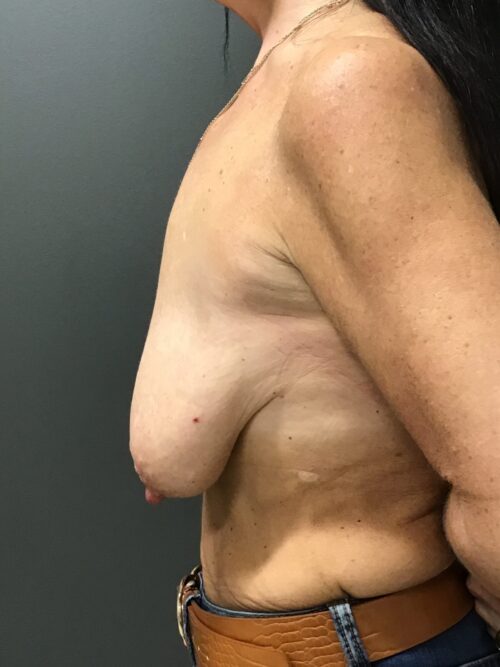

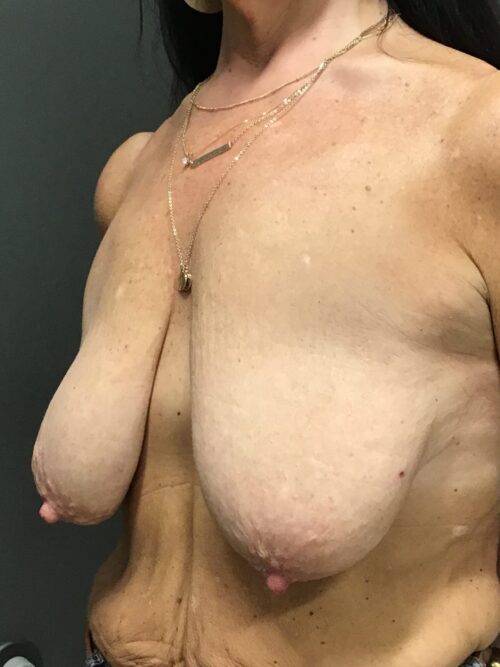
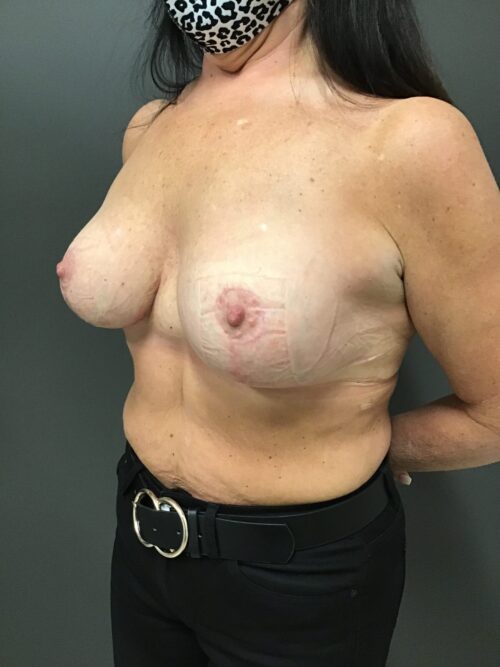

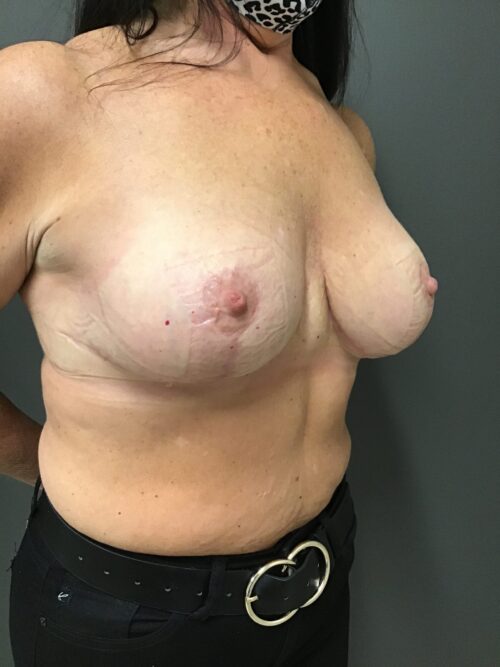

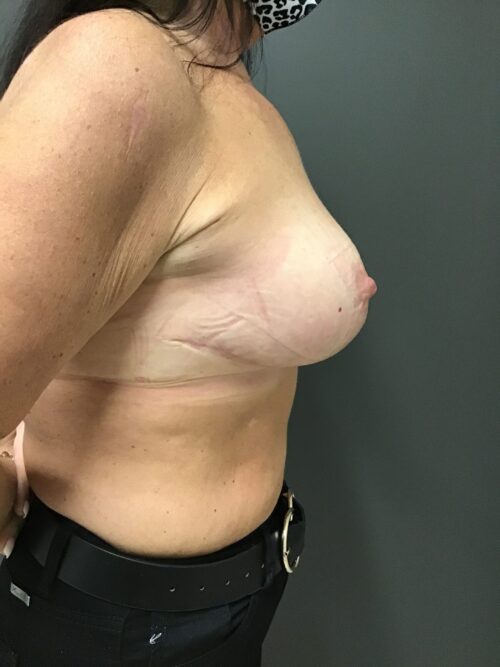

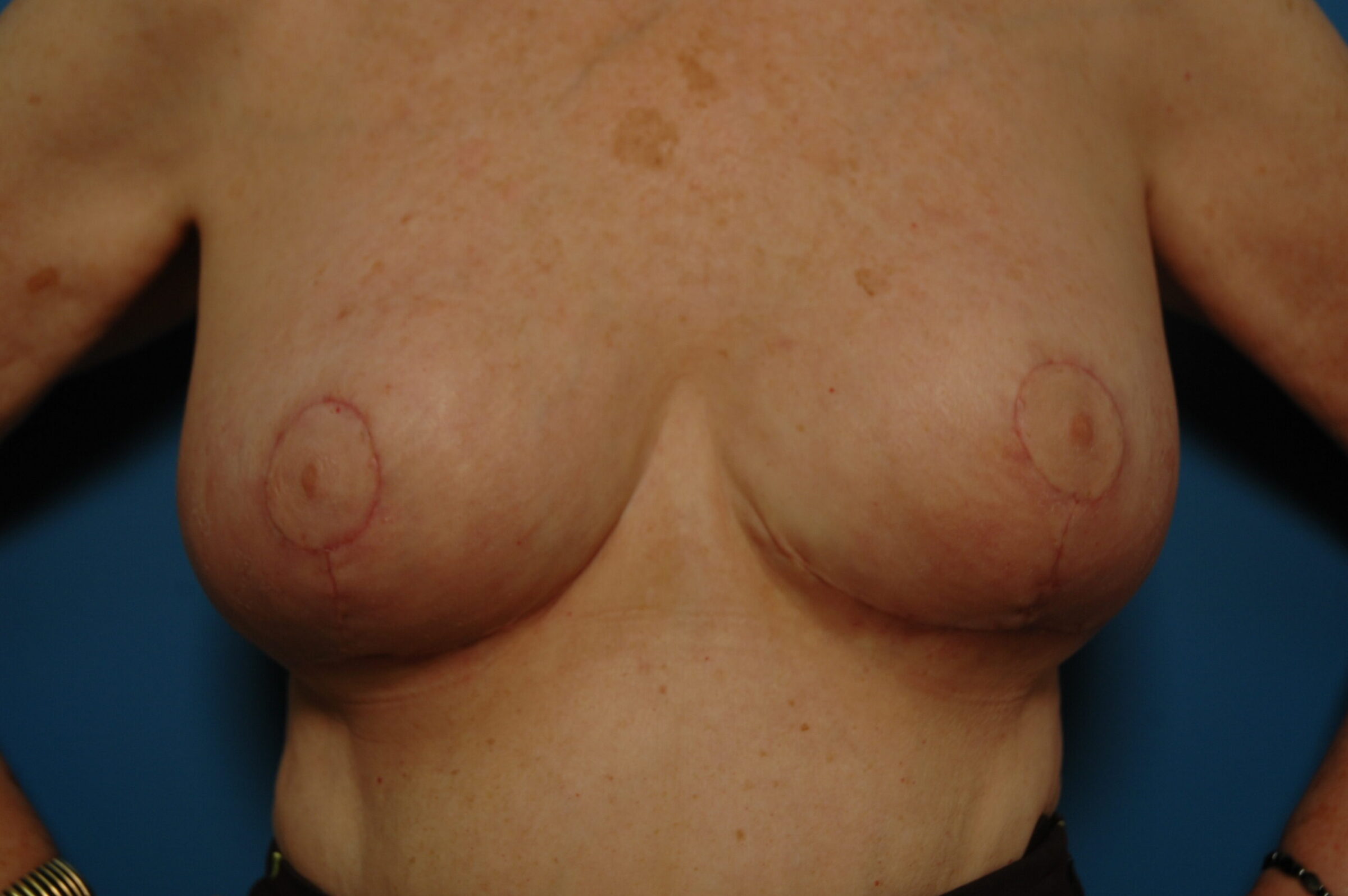
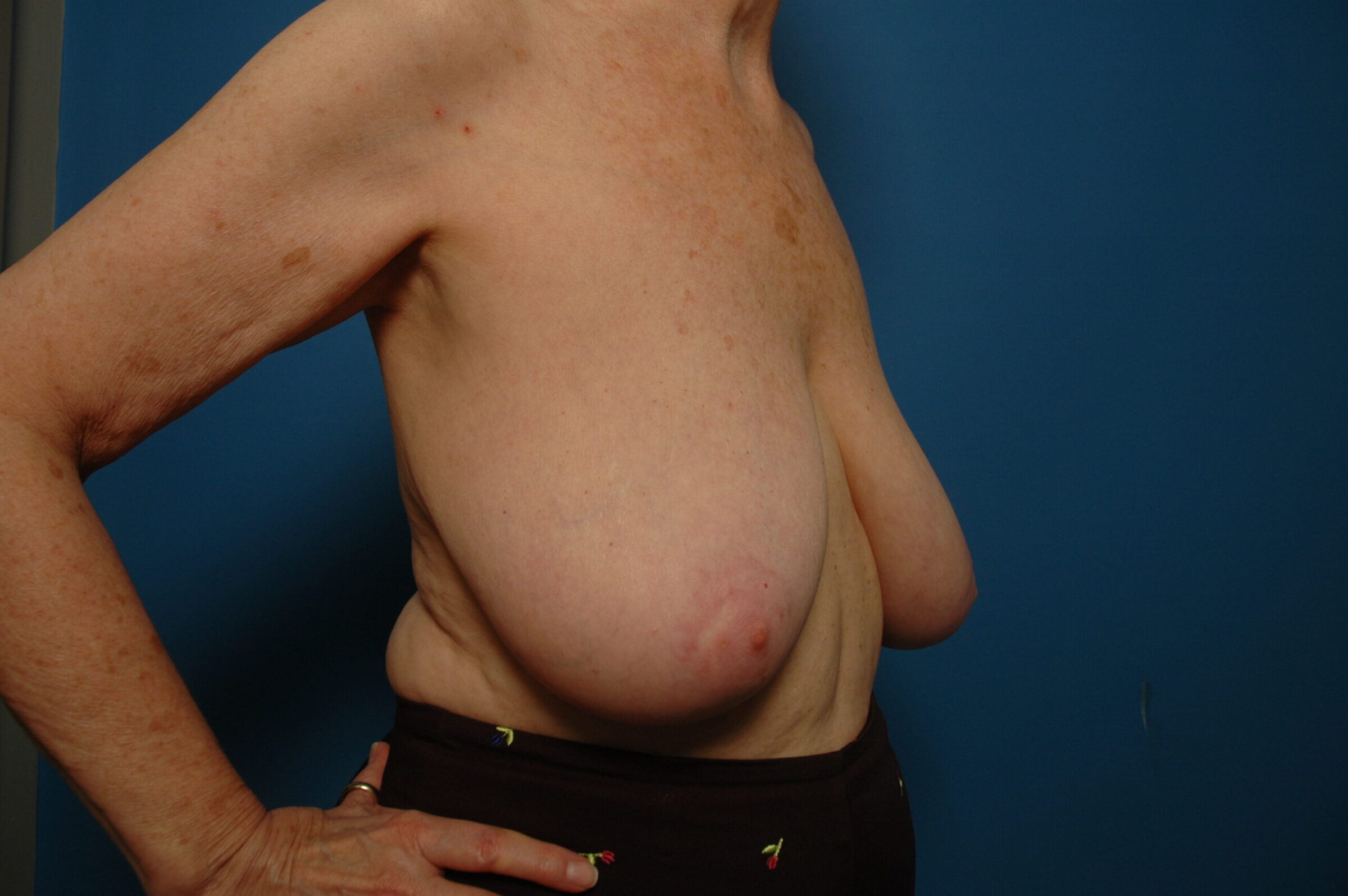




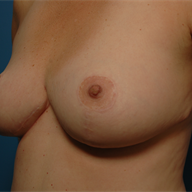
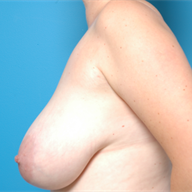

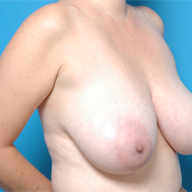
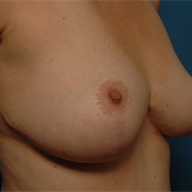
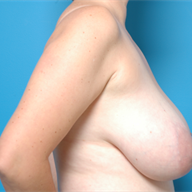
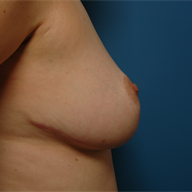
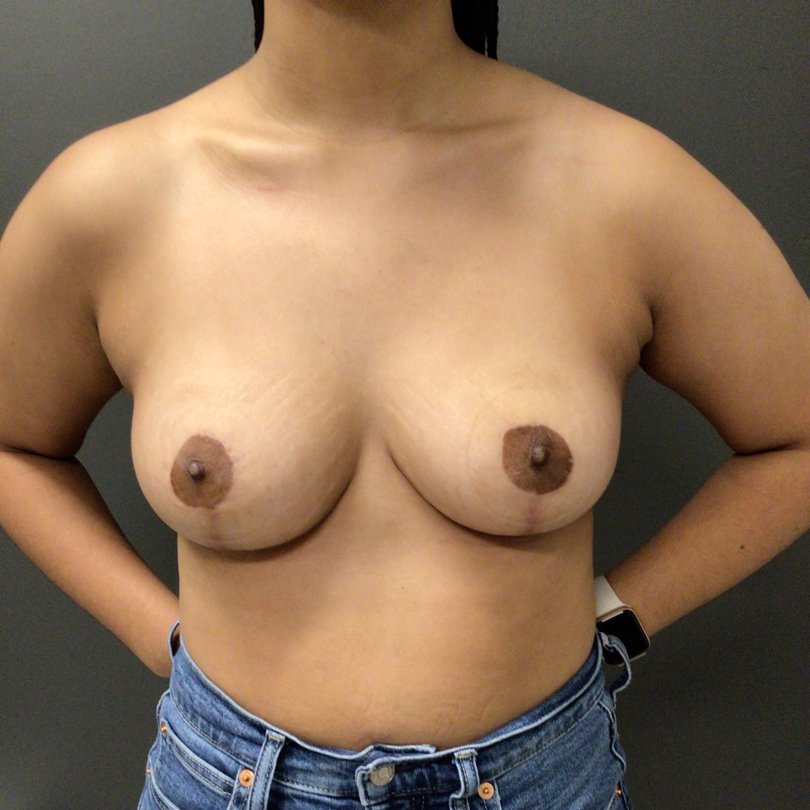


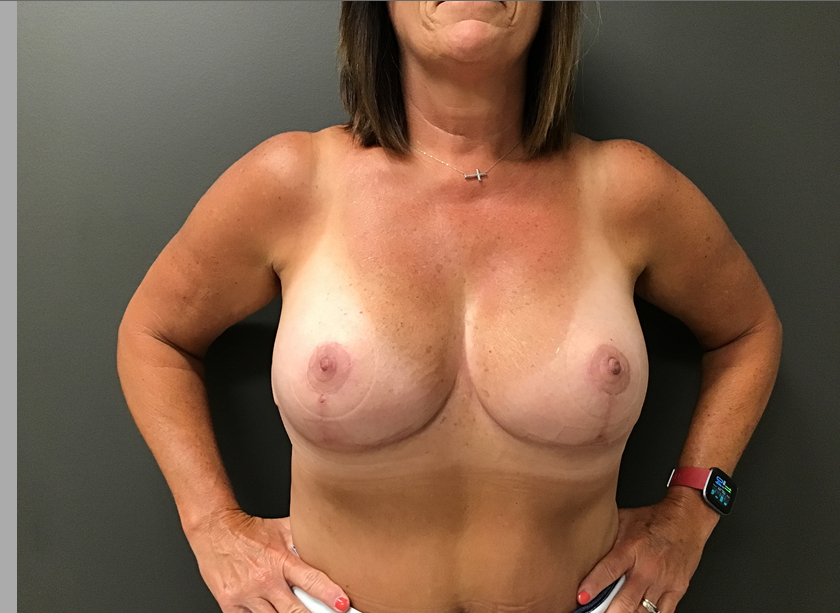
For more information about breast reduction or to see if you’re a good candidate for this procedure, schedule a consultation with Dr. Samuels at 502-897-9411.
Our practice serves Louisville, KY and the surrounding areas.